The late Arthur Beetson was nothing like anyone had ever seen before in rugby league - a big, skilful prop who learned his craft in Roma, Queensland, starting out as a skinny five-eighth.
An eventual Immortal, "Big Artie" loved for rugby league and created history by becoming the first indigenous Australian to captain a national sports team.
He etched his name into State of Origin folklore in 1980 when he was allowed to represent his beloved Maroons after years of playing for NSW under the old residential rules.
But what is not well known is how, as a precocious teenager, he was shuffled around from five-eighth to centre, to fullback and the wing before becoming one of the greatest forwards of all time.
This story first appeared in Rugby League Week's 1976 Christmas Special. Titled "Queensland's Favourite son", it was written by Phil Tresidder.
Artie Beetson, the man mountain who controls Sydney Rugby League like a traffic cop, once answered to the nickname of "Bones". You've got to believe it. They thought he might grow up to be a jockey!
As a teenager in the sweltering town of Roma in Queensland's south-west, Big Artie had to make an important career decision in sport. Would he concentrate on tennis or would he throw in his lot with rugby league?
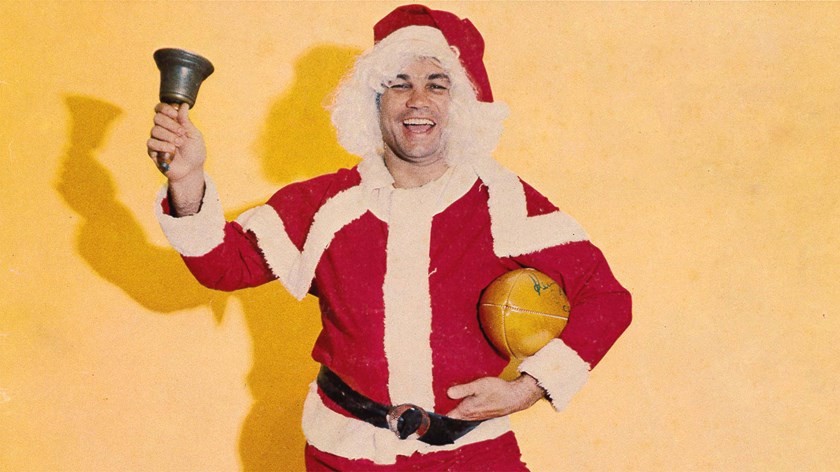
"Whoever heard of a 17-stone Wimbledon champion?" he quips years afterwards.
Yes, he made the right decision.
The story of Arthur Henry Beetson unfolded in a unique interview for Rugby League Week's Xmas Special and for personal drama, grit, colour and success it just about beats them all. Basically, it's the story of a sturdy young fellow who "did it tough" as a kid and battled through all by himself into the glamour and prosperous world that is rugby league at the top.
Beetson. The name today has a ring about it and the reputation is as big as the man himself. He is to league as Chappell is to cricket, Crampton to golf, Laver to tennis.
The followers of Balmain rued the day Beetson packed his bags and left the club because stubborn officials refused to upgrade his payments.
Balmain's loss was Eastern Suburbs' gain and the Roosters embarked on a new era of success behind the big fella.
He made his mark on the international scene in that very first, very controversial half game he played against the old enemy, England, on the Sydney Cricket Ground.
Remember the kick ahead and Johnny King scurrying in for a crucial try? Was it a fluke? Was he too exhausted to run? Not at all.
Beetson, for all his giant bulk, is a player of immense skills. When he kicked ahead in a Test match against England he did exactly what he might have done as a five-eighth for Roma.
Yes, a five-eighth. That was where he started. That was where it all started, in the little town of Roma just off the Darling Downs of Queensland.
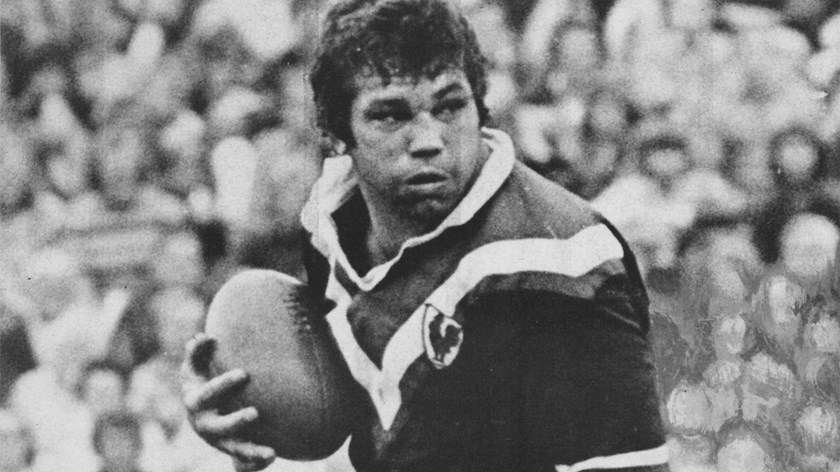
Beetson had two brothers and a sister. His father was a bushworker, lent his hand to such labour as building cattle yards.
Bill Beetson, Artie's proud father, died last year while listening to one of Eastern Suburbs' matches on the radio. "That's how he would have wanted to go," sighed Big Artie, reflecting on old times.
Life wasn't a pushover at Roma, a wheat fanning and grazing centre some 300 miles west of Brisbane. Artie's family were battlers. He worked holidays in the local store for pocket money. He was small, real small . . . and they called him "Bones" and thought he was going to be a jockey.
All the family were late maturing, Artie recalls, and he didn't start "shooting up" until he was 14. In fact, he didn't get that famous appetite until he had an appendix operation at 13 years of age and was starved for two days before they put him under chloroform.
"I guess I've been a big eater ever since," says Artie, reflecting on the early image he created in Sydney.
He was tennis champion at Roma School. The headmaster encouraged his tennis and was rewarded when Artie won the Maranoa districts championship. He played a little cricket and he played some rugby league.
As a student, he didn't care much for study but he made it through his exams nicely and picked up As in maths and book-keeping. At 15 he became a Roma Post Office telegram boy and progressed through clerical, mail sorting and telephone exchange duties. He was 16 when a local league committeeman told him to go and get his footie boots and try out for senior football.
They put him in the reserve grade side for Cities who shared the Roma league scene with rival club Wattles.
Artie trotted out as a centre and a five-eighth for Cities and he began his senior league career on the Roma Recreation Ground.
Not many years later they renamed the ground after their most famous son. The Arthur Beetson Oval.
The recreation ground had sand in the middle but down the road at Wallumbilla, a cattle town 30 miles away, they had to put the local plough over the field to soften the top for football matches.
Artie made it in the first-grade side that year - as a fullback! Next year he went straight into first grade as a centre and from 11 stone he now hurled a robust 13-stone frame into the fray. Billy Galton, a Roma publican, liked the look of him and told his old Brisbane buddies: "We've got a Harry Wells-type centre out here."
Redcliffe got in first and Artie took up residence in the Big Smoke.
72. Arthur Beetson - Hall of Fame
He began work as a postman but then took an inside clerical job and his weight simply "blew up".
Redcliffe looked astonished at their new 16-stone centre buy.
Artie decided some labouring work would get him into shape. They had him wheeling barrows through mud up to his knees in an electricity plant project set in a swamp.
He was just 18, he had never been so sore and he didn't last long. But he got his weight down to 14 stone and he lined up in the centres alongside a slick mover by the name of Kevin Yow Yeh.
The coach was old Henry Holloway.
Beetson smiles as he recalls: "I had reasonable pace for a centre but it was a real step up in class to Brisbane football.
"This was my first experience with rigid training schedules. Old Henry was a tough old training sergeant and he bellowed his orders spiced with some pretty colourful language that used to stop basketballers and hockey players on the other side of the field in their tracks."
Redcliffe made the semis in 1964 and Beetson was a centre again in 1965 but pining for the chance to move into the forwards.
"We've got plenty of forwards," Holloway told him.
He pushed Beetson out on the wing and the big fella just wouldn't swallow that one.
"It's the only time in my life I've refused to play," he said.
"I told Henry I'd rather play in the forwards in reserve grade."
But in the next match a forward vacancy arrived through injury and Beetson stepped into the second row. He won the Brisbane Courier-Mail's best and fairest award.
In 1965 he played one game for Brisbane alongside Elwyn Walters against a tough but ageing North Queensland team.
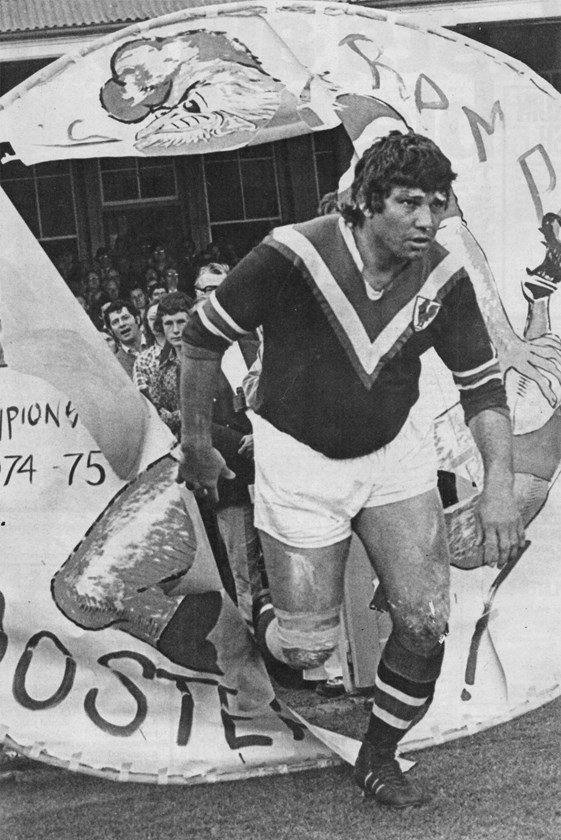
Brisbane fielded a team of "kids" and they led 15-8 only to lose through inexperience. Redcliffe won the premiership that year and Beetson played front row in the grand final.
Astute observers in Harry Bath and Kevin Humphreys made the trek to Brisbane to watch that match chiefly to buy the quicksilver Yow Yeh. In the end, they got both Yow Yeh and Beetson.
"I was reluctant at first to go to Sydney," Artie confesses.
"Everybody told me how much tougher it would be and that I would be lucky to get out of reserve grade down there.
"In the end, it was the money that persuaded me.
"I got $500 for the season from Redcliffe but Balmain were offering me a $5000 three-year contract and that was persuasive."
For a 20-year-old bush boy, Beetson found Sydney a vast and lonely place.
"I did it hard for the first couple of months.
"I had never been to Sydney before, I was wet behind the ears and I didn't know a soul. Life in a boarding house can be lonely.
"Balmain could have done a little more for me perhaps, but it taught me a lesson - and that is, when we take on new players at Easts we make sure they feel at home."
In 1966 Beetson teamed up with George Piper and Bob Boland in the Balmain front row and his league education took another giant stride.
"I learned a lot from those blokes," he said, "Boland was like a big brother to me.
"Looking back, I think he was one of the most under-rated forwards ever to play the game, he was a great ball distributor and I would run off him all day.
"He'd hear me calling and he'd hit me with a flick pass from 10 yards away. He had a beautiful pair of hands."
Sydney football was as brutal and rugged as he had been warned and Beetson had some run-ins with the leading enforcers, John O'Neill and the Souths pack, Billy Wilson who tested him out with a belt on the chin at North Sydney, and other ageing warriors such as Kevin Ryan, Paul Quinn, "Ned" Kelly and Bruce Olive.
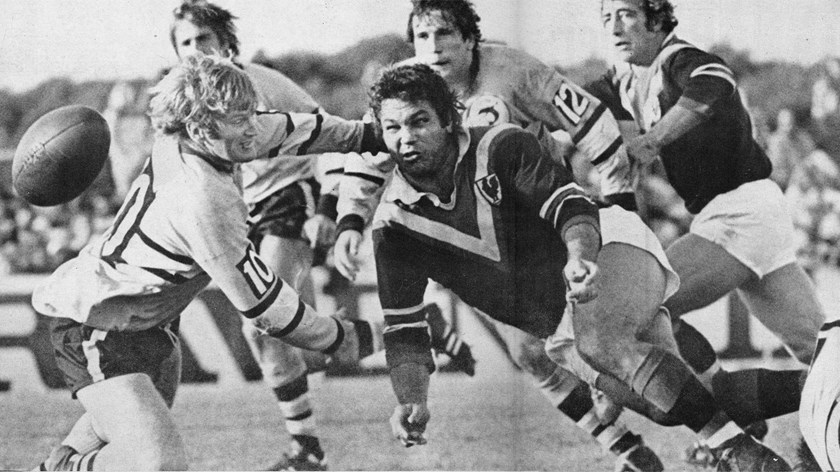
Beetson's potential did not escape the selectors, who hustled him into the Test team against England.
But his dream of wearing the Australian guernsey dissolved when he "busted" his knee running into "Poppa" Clay's head on the preceding Sunday against St George.
Out of the First Test, he was chosen again for Brisbane, but once again fate conspired against him.
Playing against Manly-Warringah, he was on the receiving end of a pile-driving tackle by Ken Day and his shoulder joint popped out.
He passed the physical test in Brisbane but a training run convinced him he was unfit and once again he withdrew. Dick Thornett got the vacant spot.
Came the crunch Third Test decider in Sydney and Beetson was determined to play although his shoulder was "still crook".
He put Ken Irvine over in the corner for an early try but after 20 minutes realised his shoulder wouldn't see out the distance.
Coach Ian Walsh told him to try and stay there until half-time.
He is perhaps the most respected player in the game where it counts - among other players.
Then came that famous kick ahead and the match-winning try.
As Beetson recalls it: "Billy Smith put me through a gap and the play opened up for me.
"As a five-eighth and centre in earlier days I knew the value of a tactical kick ahead.
"I kicked this time and Johnny King raced through to gather the ball and score.
"Afterwards there was a controversy that the kick was a fluke and that I was too tired to run.
"But I'll deny that for the rest of my days. I did it on the spur of the moment and I knew what I was doing."
Beetson was unhappy at Balmain where, despite his Test honours, there had been no updating of his contract and only an additional $400 for his Australian appearances.
Balmain worked on the theory that players should get big incentive win bonuses to drive them to greater performances.
But Beetson has long maintained that a footballer plays his best football when he is content.
Contentment is incentive enough, he says, and when Dennis Tutty won his equity case, Beetson negotiated the very next week with Eastern Suburbs.
Coach Don Furner, striving to streamline Easts for the premiership, already had signed big Jim Morgan from Souths and he wanted Beetson, too.
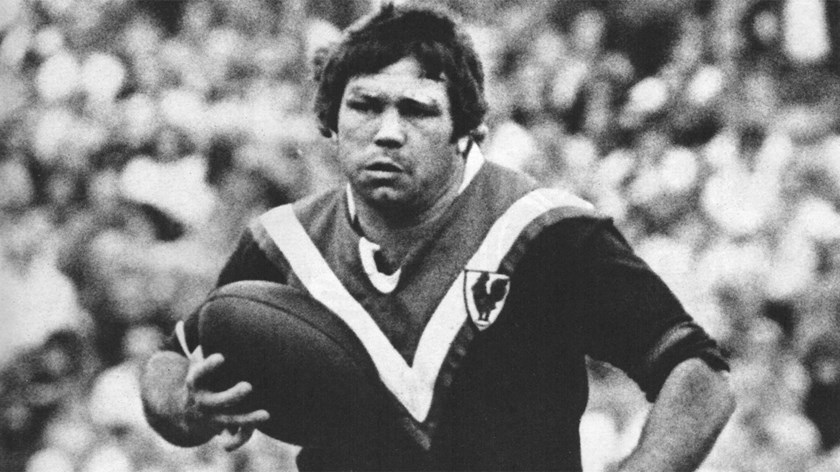
Beetson had many friends at Balmain and he had enjoyed his football with the Tigers but he votes his move to Easts the best decision he could have made.
And so he continued his climb to stardom, enjoying the extra responsibilities of captaincy and revelling under the coaching of Jack Gibson and the business guidance of Easts Leagues Club chief Ron Jones.
He is part of the new Easts tradition and the sight of his burly frame leading the Roosters onto the field unfailingly excites the club's rabid supporters.
He is married, lives at Denistone with his wife Noelene and has two youngsters, Scott and Mark. He is perhaps the most respected player in the game where it counts - among other players.
"I am not a fighter," he says.
"I might have had a reputation early on, but that was my attempt to earn respect.
"I never go onto the field deliberately trying to inflict unnecessary punishment on rivals.
"League is an aggressive game but it can be aggressive without being dirty and by sticking to the rules."
He plays golf, squash and tennis for recreation and listens to soul music.
He doesn't seek fame and fortune, but is content to have firm friends, security for his family and "a roof over my head".
